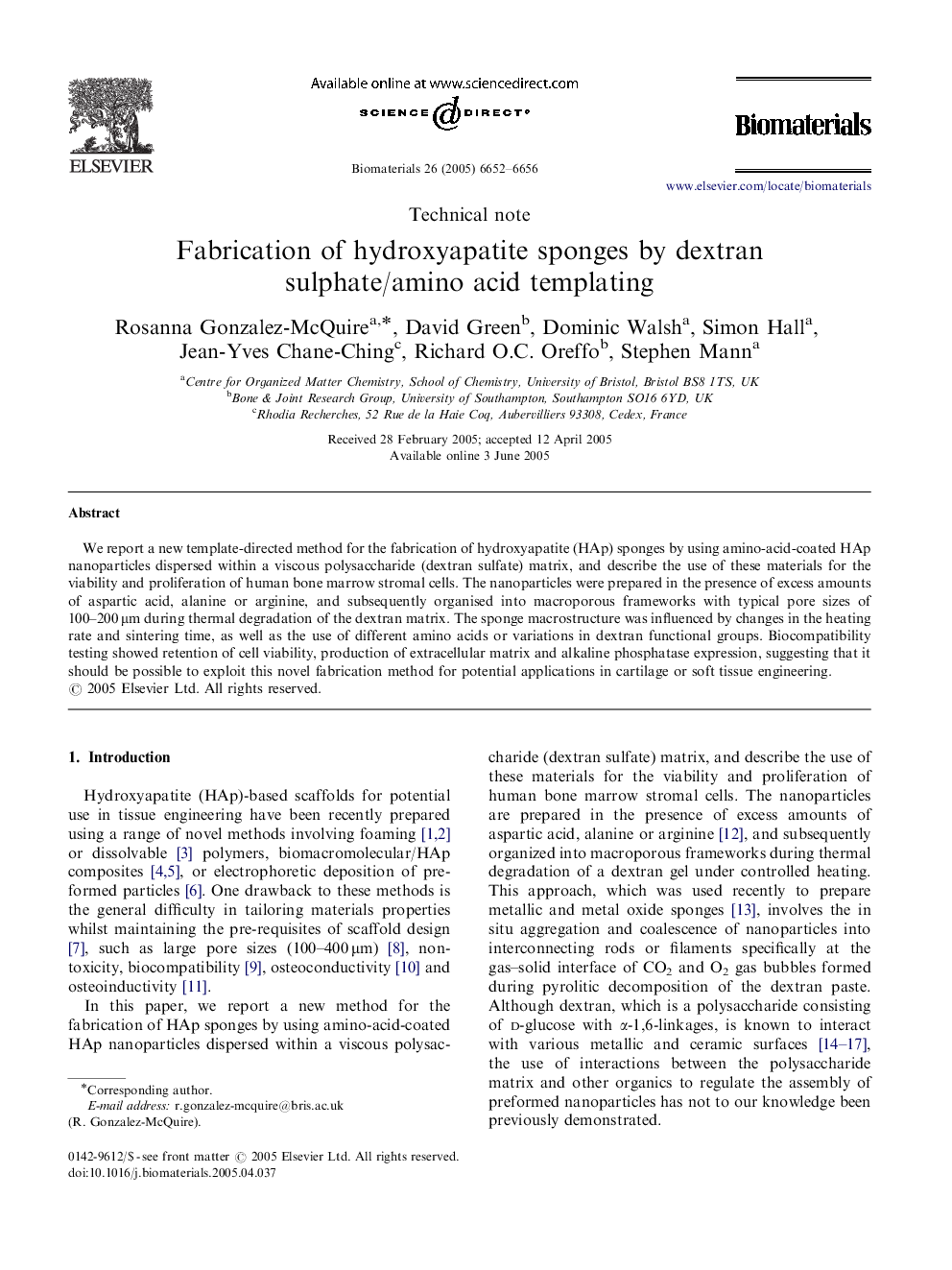| Article ID | Journal | Published Year | Pages | File Type |
|---|---|---|---|---|
| 10985 | Biomaterials | 2005 | 5 Pages |
We report a new template-directed method for the fabrication of hydroxyapatite (HAp) sponges by using amino-acid-coated HAp nanoparticles dispersed within a viscous polysaccharide (dextran sulfate) matrix, and describe the use of these materials for the viability and proliferation of human bone marrow stromal cells. The nanoparticles were prepared in the presence of excess amounts of aspartic acid, alanine or arginine, and subsequently organised into macroporous frameworks with typical pore sizes of 100–200 μm during thermal degradation of the dextran matrix. The sponge macrostructure was influenced by changes in the heating rate and sintering time, as well as the use of different amino acids or variations in dextran functional groups. Biocompatibility testing showed retention of cell viability, production of extracellular matrix and alkaline phosphatase expression, suggesting that it should be possible to exploit this novel fabrication method for potential applications in cartilage or soft tissue engineering.
